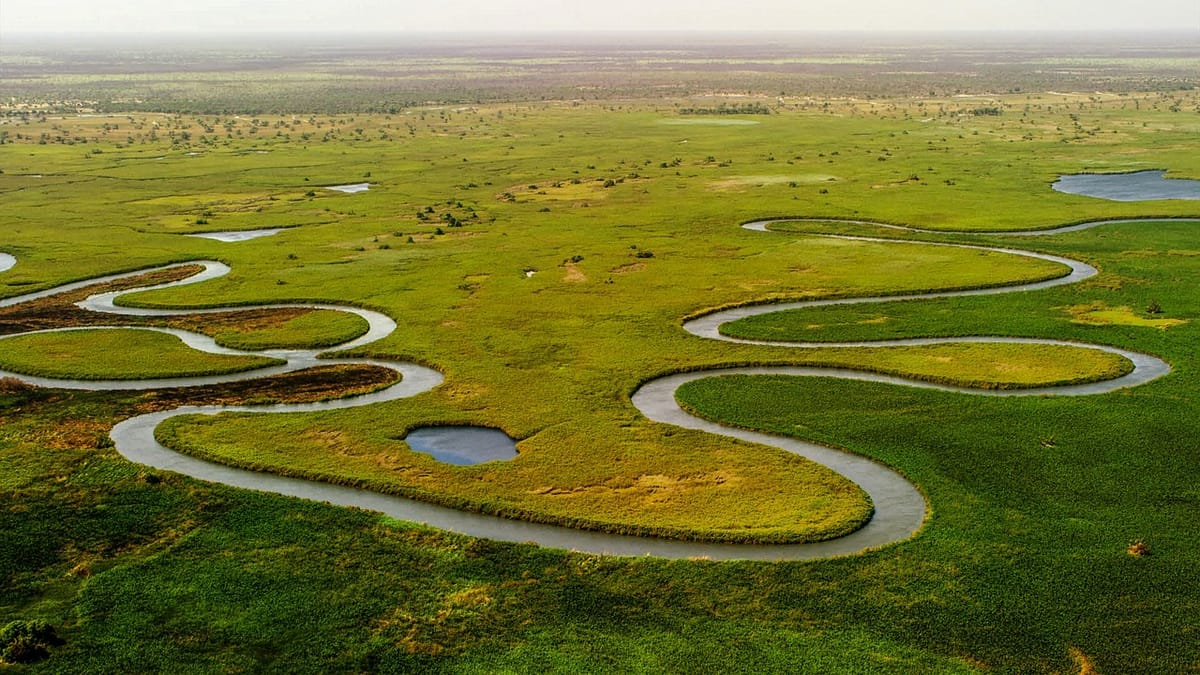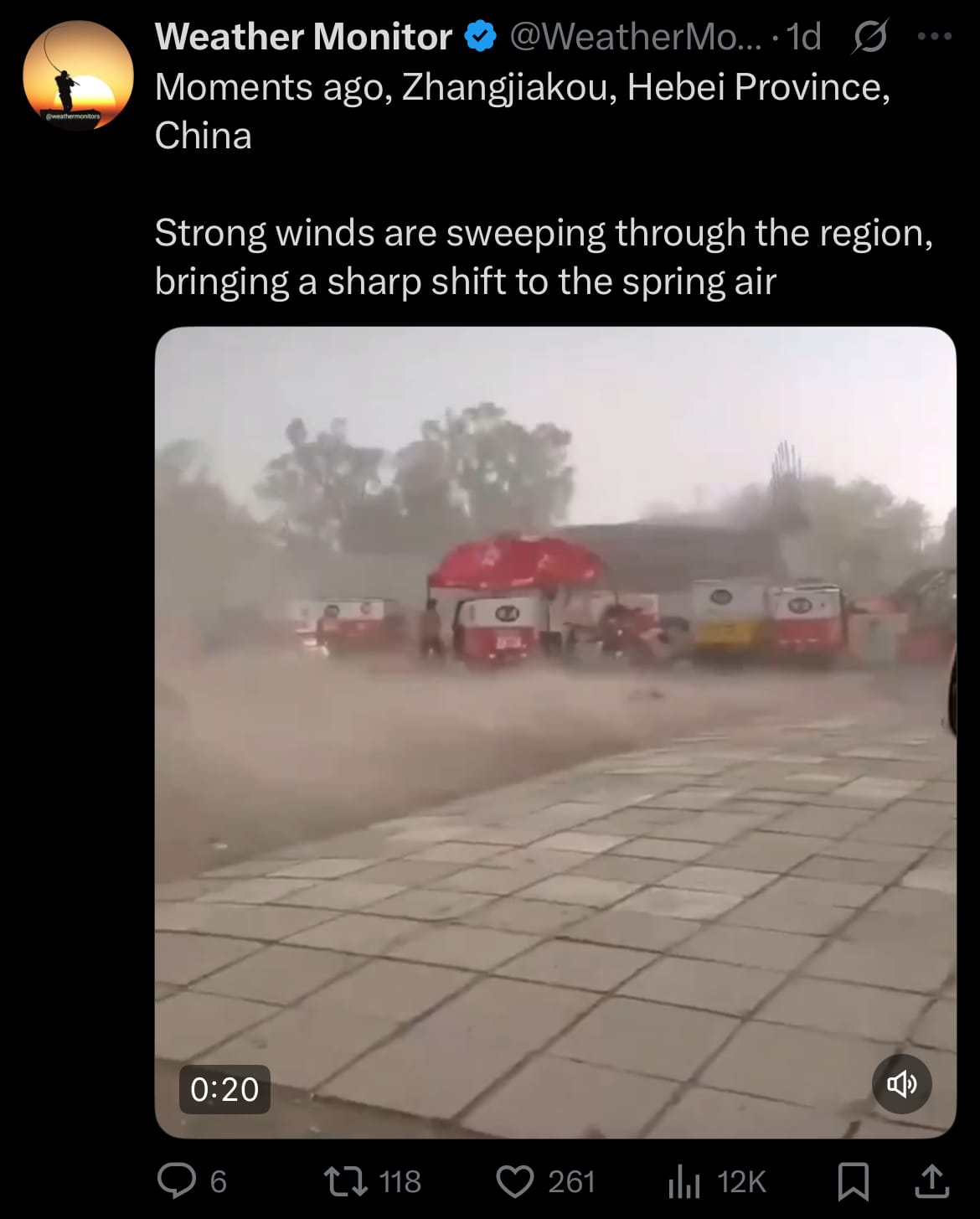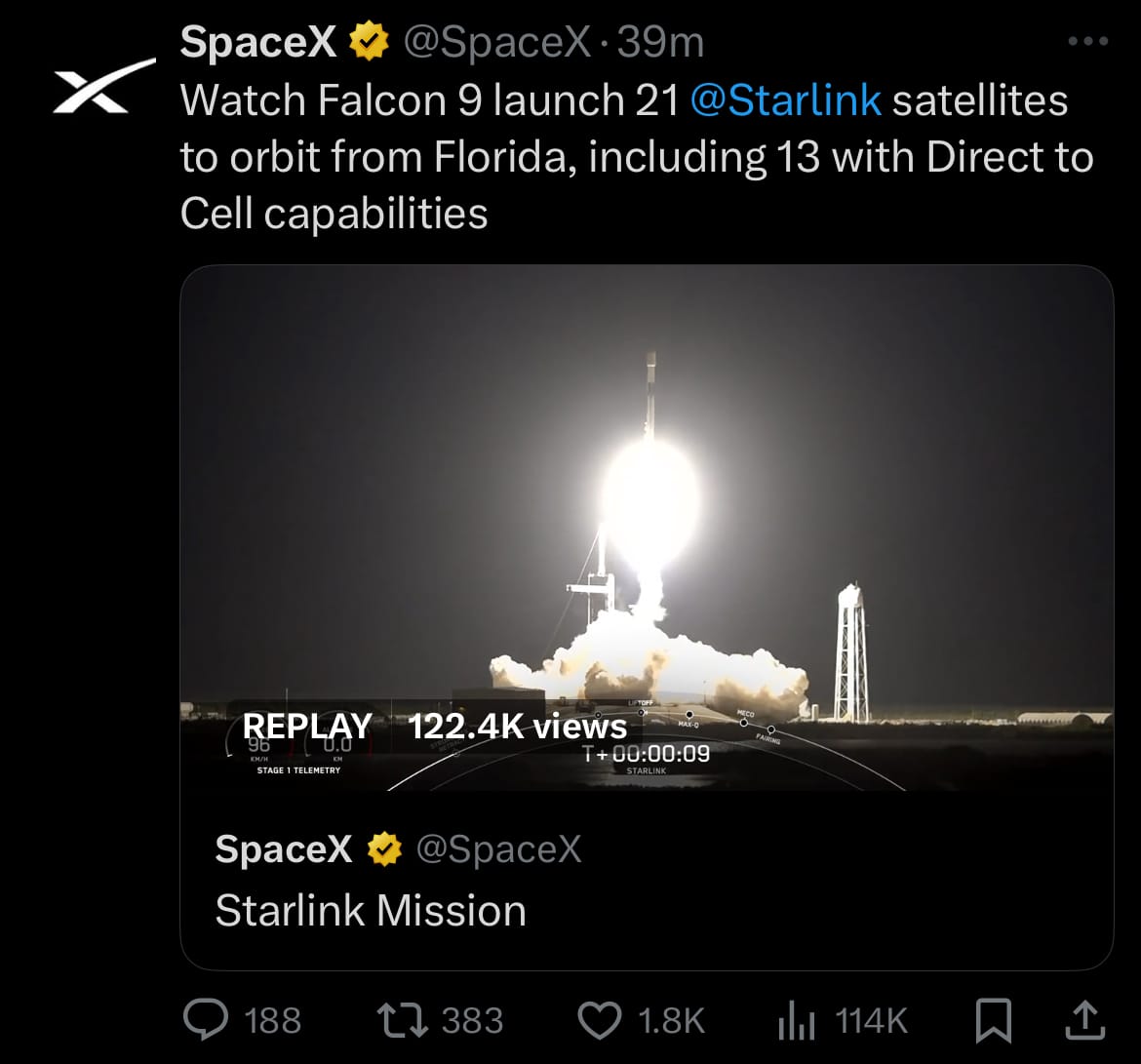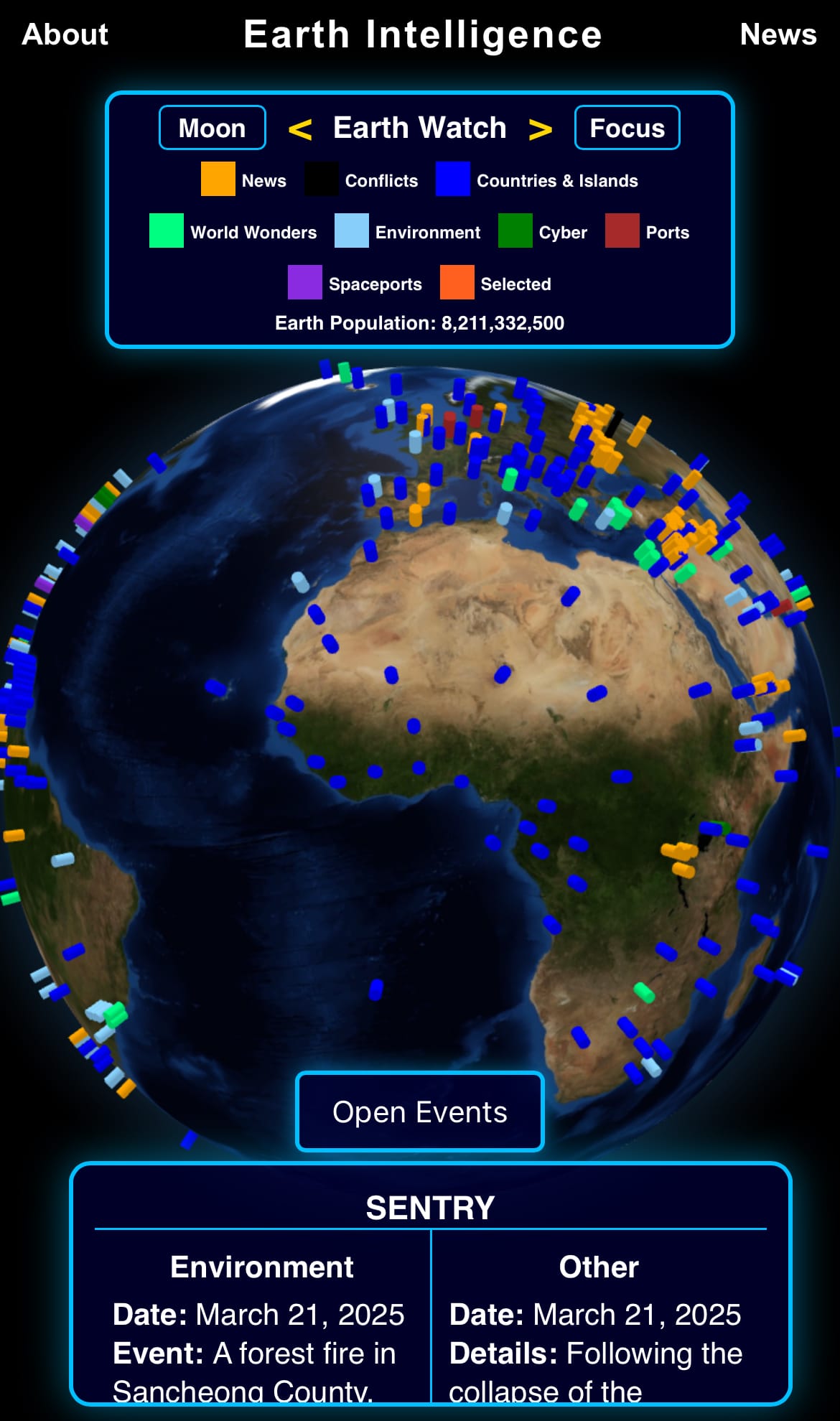Sunday☕️

Economics & Markets:
- Yesterday’s commodity market:

- Yesterday’s crypto market:

Environment & Weather:
- A strong storm system, originating from a Mongolian cold vortex, is impacting northern China with high winds, sandstorms, and cold temperatures through April 13, 2025. Winds reaching 150 kph (93 mph) have prompted Beijing’s orange wind alert, affecting areas including Beijing, Tianjin, Hebei, Inner Mongolia, Henan, and parts of the northwest and south. The storm has disrupted transportation, with flight and train delays, closed roads, and reduced visibility from sandstorms.

- Temperature drops, hail, and light snow have also been reported in various regions. The storm has led to temporary closures of public sites in Beijing and event postponements, with local authorities advising caution. Rural areas are seeing efforts to secure infrastructure against wind damage. Impacts include minor power outages and agricultural concerns due to sandstorms. The storm is expected to continue through Sunday, April 13, before weakening and moving southeast, likely dissipating by early Monday, April 14, 2025.

- As of April 12, 2025, the Canary Islands are facing flooding from Storm Olivier, which has brought heavy rainfall and triggered landslides. Rainfall measurements indicate up to 70mm in a few hours in some locations. Lanzarote is notably affected, with flooding reported in Teguise and Arrecife. Other islands, including La Gomera, El Hierro, Gran Canaria, Fuerteventura, and La Graciosa, are also impacted, though southern areas of Tenerife, El Hierro, and La Gomera report less intense rainfall.
Space:
- Yesterday, April 12, 2025, SpaceX launched the Starlink 12-17 mission from Launch Complex-39A at NASA’s Kennedy Space Center, Florida, at 8:53 p.m. EST. A Falcon 9 rocket carried 21 Starlink V2 Mini satellites, including 13 with Direct to Cell features, into low Earth orbit to improve internet access. The first-stage booster, B1083, completed its 10th flight, having supported missions like NASA’s Crew-8, SPHEREx, and PUNCH.

- Eight minutes after launch, B1083 landed on the droneship A Shortfall of Gravitas in the Atlantic Ocean. The satellites were released about one hour later. Starlink, run by SpaceX, is the world’s largest satellite constellation, with over 7,500 satellites as of early 2025. It offers internet service worldwide, especially in underserved regions, with plans to grow to 12,000 satellites or more. The network expands weekly through frequent satellite launches.
Statistic:
- Largest assets on Earth by market capitalization:
- Gold: $21.857T
- 🇺🇸 Apple: $2.976T
- 🇺🇸 Microsoft: $2.887T
- 🇺🇸 NVIDIA: $2.706T
- 🇺🇸 Amazon: $1.961T
- 🇺🇸 Alphabet (Google): $1.925T
- Silver: $1.812T
- Bitcoin: $1.694T
- 🇸🇦 Saudi Aramco: $1.675T
- 🇺🇸 Meta Platforms: $1.377T
- 🇺🇸 Berkshire Hathaway: $1.130T
- 🇺🇸 Broadcom: $855.47B
- 🇹🇼 TSMC: $814.70B
- 🇺🇸 Tesla: $811.56B
- 🇺🇸 Walmart: $743.96B
- 🇺🇸 Eli Lilly: $657.69B
- 🇺🇸 JPMorgan Chase: $657.34B
- 🇺🇸 Visa: $643.13B
- 🇺🇸 UnitedHealth: $548.34B
- 🇨🇳 Tencent: $537.01B
- 🇺🇸 SPDR S&P 500 ETF Trust: $490.04B
- 🇺🇸 Mastercard: $464.74B
- 🇺🇸 Exxon Mobil: $446.11B
- 🇺🇸 Costco: $427.44B
- 🇺🇸 Netflix: $392.80B
History:
- Weather manipulation began in the 19th century with early experiments, such as American meteorologist James Espy’s theories on using fires to induce rain and attempts to trigger precipitation with explosives. The field advanced significantly in 1946 when U.S. scientists Vincent Schaefer and Bernard Vonnegut developed cloud seeding, using dry ice and silver iodide to stimulate rainfall. In the following decades, the U.S. implemented cloud seeding programs, particularly in western states like California and Wyoming, to address water shortages. The technology spread globally, though its use in military operations, such as extending monsoons during the Vietnam War, led to controversy and the 1977 ENMOD treaty, which prohibited weather modification for hostile purposes. Questions about effectiveness and environmental impact persisted, shaping ongoing research.
- As of 2025, cloud seeding remains a common practice in multiple countries, including the U.S., China, and the UAE, each applying it to address regional needs like snowfall, agriculture, or water scarcity. In the U.S., programs leverage improved aircraft and weather modeling to modestly increase precipitation (5–15%). Similar efforts in China support farming, while the UAE focuses on desert water supply. Emerging geoengineering concepts, like solar radiation management, have sparked interest, with U.S.-based research exploring their potential to mitigate climate change. However, these ideas face scrutiny over possible unintended consequences, such as ecological shifts. The absence of international regulations and varying public perceptions continue to influence the development and application of weather modification technologies.
Image of the day:

Thanks for reading!
Earth is complicated, we make it simple.
Click image to view the Earth Intelligence System:



Support/Suggestions Email:
earthintelligence@earthintel.news




